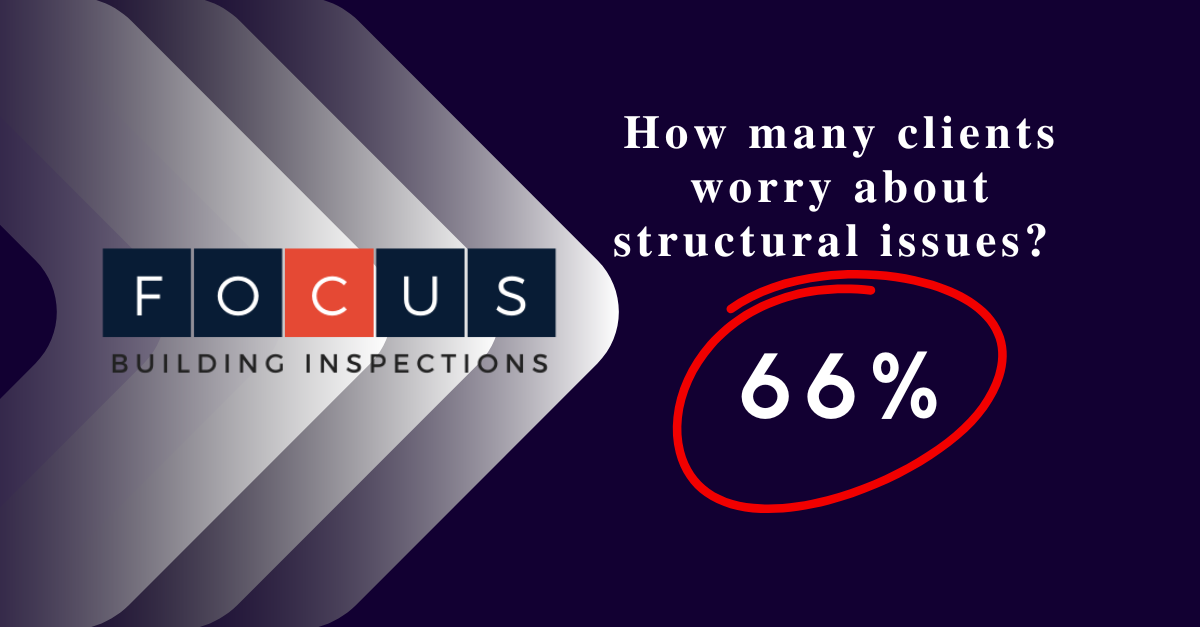What You Need to Know About Commercial Building Structural Issues
66% of Our Clients Are Concerned About Commercial Structural Systems — Here’s What You Need to Know
When 66% of our clients say they're concerned about structural systems, we listen—and we understand. The structural integrity of a commercial building is foundational (literally and figuratively) to everything else. If something goes wrong, the risks aren’t just expensive—they’re potentially catastrophic.
In this blog, we’ll explain:
Why structural systems are a major concern in commercial buildings
5 of the most common structural issues we identify
What our commercial structural inspection includes
What you can do to detect and manage structural risks early
Let’s explore what every property stakeholder should know about structural systems.
Why Structural Systems Are Such a Big Concern
While some building issues are cosmetic or repairable without urgency, structural issues strike at the heart of a property’s safety and value. Here’s why clients are right to be cautious:
1. Structural Failures Are High-Risk
A sagging beam or cracked footing isn’t just a maintenance issue—it can lead to building instability, collapse, and serious liability. These problems affect safety, insurance, and legal compliance.
2. Defects Are Often Hidden
Most structural elements—beams, columns, slabs, footings—are concealed by walls, ceilings, or floor coverings. That means years of movement or water intrusion can go unnoticed.
3. Repairs Are Complex and Costly
Correcting a bowed wall or failed beam can cost tens or hundreds of thousands of dollars. Structural repair often requires engineering, permitting, and even tenant relocation.
4. Structural Integrity Affects Financing and Valuation
Lenders and appraisers take structural soundness seriously. Evidence of movement, foundation cracks, or settlement can delay or derail transactions.
5 Common Structural Problems in Commercial Buildings
Here are the most frequent—and most important—issues we uncover during our inspections:
1. Foundation Cracks and Settlement
Not all cracks are structural, but some are. Vertical or diagonal cracks, separation at corners, or uneven slab movement often indicate settlement or shifting footings. This can result from poor lot drainage, expansive soils, or substandard construction.
2. Bowed or Buckling Walls
We often find load-bearing masonry or tilt-up walls that have bowed inward or outward, especially in older industrial buildings. This may indicate lateral pressure from soil or water—and it’s a serious concern.
3. Beam and Joist Deterioration
Wood or steel structural members can degrade due to moisture intrusion, corrosion, or insect damage. In some cases, improper notching or over-spanning during original construction leads to deflection or sagging.
4. Roof Structure Problems
We inspect trusses and roof framing for deflection, failed gussets, or water intrusion. If the roof structure is compromised, the risk of collapse increases, especially under snow or equipment loads.
5. Unpermitted Modifications
It’s not uncommon to find walls removed, columns relocated, or holes cut into structural members—often to accommodate mechanical systems—without engineering oversight. These changes can quietly undermine the entire building’s integrity.
What Our Commercial Structural Inspection Includes
We understand how important it is to assess not just the visible conditions, but the hidden clues that point to deeper structural problems. Our inspection includes:
✔ Foundation and Slab Assessment
We evaluate visible footings, stem walls, and slabs for cracks, heaving, deflection, and material degradation. We document their location, direction, and severity with photographs and notes.
✔ Wall System Evaluation
We inspect CMU (concrete masonry unit), tilt-up, steel frame, or wood-framed walls for evidence of displacement, moisture intrusion, separation at joints, or signs of structural stress.
✔ Framing and Load-Bearing Elements
We observe accessible structural framing members including joists, beams, trusses, and headers. We note sagging, deflection, improper notching, or unusual gaps.
✔ Roof Structure Review
We inspect accessible attic or deck framing for deflection, structural cracking, water damage, and signs of overloaded spans or failing connectors.
✔ Column and Pier Review
We examine steel, wood, or masonry columns and piers for plumb, rust, impact damage, and secure connections to load paths.
✔ Drainage and Soil Movement Clues
Exterior grading, water runoff patterns, and downspout discharge can reveal underlying causes of structural issues. We link these factors back to visible damage.
✔ Opinion of Cost and Structural Concerns Summary
We outline issues that warrant monitoring, further engineering review, or immediate repair. Our reports include a non-binding Opinion of Cost when concerns are significant.
How to Proactively Manage Structural Integrity
Commercial building owners and investors can take these proactive steps to reduce risk and plan for long-term stability:
➤ Monitor Movement Over Time
Track the width of cracks and movement annually. If a crack grows wider or new cracks form, it’s time for evaluation by an engineer.
➤ Maintain Positive Drainage
Water causes most foundation problems. Ensure grading slopes away from the building, gutters are functional, and downspouts discharge far from the foundation.
➤ Avoid DIY Modifications
Never cut or alter structural components without proper design approval. Even “minor” changes to joists or columns can weaken a building significantly.
➤ Schedule Structural Assessments Every Few Years
If your building is older, unusually shaped, or in a high-moisture region, a structural inspection every 3–5 years can prevent major surprises.
➤ Bring in a Structural Engineer When Needed
If we flag a potential structural concern, we’ll recommend evaluation by a licensed structural engineer. Their expertise ensures your next steps are sound—both literally and legally.
Conclusion: Structural Integrity Is Non-Negotiable
A commercial property can’t function safely or profitably without a sound structure. When 66% of clients say they’re worried about this system, it’s not an overreaction—it’s due diligence. Our job is to uncover potential issues, document them clearly, and help you make informed decisions with confidence.
Ready for a Structural System Evaluation?
When it comes to your building’s structure, there’s no room for assumptions. With 66% of our clients concerned about structural systems, you’re not alone—and you’re right to prioritize safety and stability.
At Focus Building Inspections, we provide detailed, professional commercial structural evaluations that reveal hidden risks before they become major liabilities. Safeguard your investment—and your peace of mind—by starting with a strong foundation.
Book your commercial inspection or contact us for a customized walkthrough. Whether you’re buying, selling, or just concerned, we’re here to support your investment.
Questions This Article Answers
Why is structural integrity a major concern for commercial building owners and investors?
What are the risks associated with structural system failures?
Why are structural defects often difficult to detect without inspection?
How can structural issues impact property valuation, insurance, and financing?
What are the top five structural problems identified during commercial inspections?
What does a thorough commercial structural inspection include?
How can property owners proactively monitor and manage structural integrity?
Why is professional engineering evaluation critical when structural concerns arise?
How does drainage impact foundation and structural health?
How frequently should commercial buildings undergo structural assessments?
Bibliography / Resources
American Society of Civil Engineers. (n.d.). Structural standards and resources. ASCE. Retrieved April 25, 2025, from https://www.asce.org/structural-engineering
International Association of Certified Home Inspectors. (n.d.). Inspecting commercial structures. InterNACHI. Retrieved April 25, 2025, from https://www.nachi.org/comsop.htm
International Code Council. (2021). Structural design criteria for commercial buildings. ICC. Retrieved April 25, 2025, from https://codes.iccsafe.org/codes/i-codes
National Institute of Building Sciences. (n.d.). Building envelope design guide. NIBS. Retrieved April 25, 2025, from https://www.wbdg.org/design-disciplines/building-envelope-design-guide
Structural Engineers Association. (n.d.). Building movement, cracking, and forensic engineering. SEA. Retrieved April 25, 2025, from https://www.seaint.org



